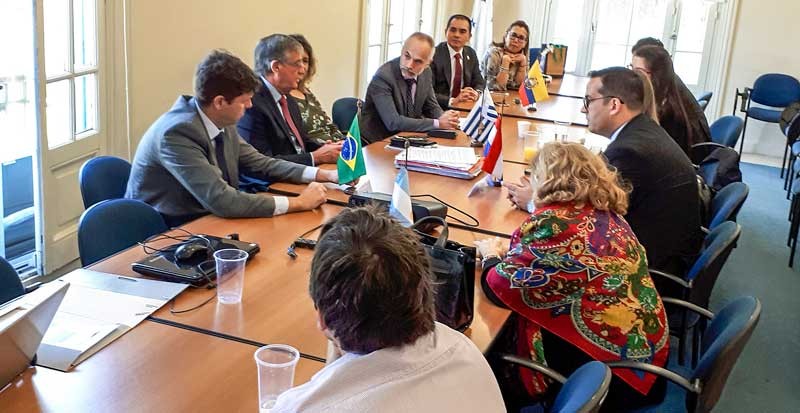


One of the tools that commercial blocs have to preserve their industries, sometimes, in the face of unfair competition posed by other production areas, are the Common External Tariffs or AEC.
In this sense, the Common Market of the South -MERCOSUR- has incorporated into its work agenda a review process of these tariffs, with the aim of improving its competitiveness, simplifying and modernizing the tariff scheme.
The statement released in mid-March 2021 expresses among its main concepts:
“Understanding that it is a structural change, we express, firstly, the importance of quantifying the uncertain benefits of advancing in a unilateral and free reduction of the tariff scheme and, secondly, the need to improve production conditions, competitiveness and efficiency through national industrial and trade policies prior to any reduction of the AEC in order to assure regional companies at least the same benefits that would be granted to producers outside the bloc through the reduction of import tariffs. ”.
"In this line, any review that is carried out must be based on impact studies that quantify the benefits and costs that will inevitably cause a reduction in the AEC, in terms of jobs that may be affected, investments, competitiveness, companies based in MERCOSUR, fiscal cost, increased imports and loss of regional market for local exporters, to name a few ”.
“This loss of regional market may weaken the scalability of the nearshore outsourcing advantage (proximity subcontracting) of the MERCOSUR countries when exporting footwear to the United States, a country that absorbed more than 20% of the block's footwear exports in 2019. This movement became evident as an opportunity to increase exports in a pandemic scenario, being able to provide cost reduction, logistical advantage and increased market-share in the North American market.
For this reason, a structural change of this magnitude must be agreed with the entities and industries reached, after dialogue and consultation that allows considering the particular production and supply and their local and global value chains ”.
“The footwear industry in MERCOSUR reached a production of 1,023 billion pairs of footwear in 2019, generated 300,000 jobs in 6,200 footwear manufacturing companies in the region. It is a highly job-generating industry, intensive labor force, and which draws, through linkages, to the leather, textile, plastic, rubber, metallurgy, capital goods, packaging industries, among other important productive chains ”.
“In pursuit of favoring footwear manufacturing in MERCOSUR, we maintain the importance of responsibly evaluating the eventual benefits and certain costs that any downward revision of the Common External Tariff will cause, guaranteeing as a priority the execution of national and regional policies that give support to the competitiveness, efficiency and generation of regional value of the footwear industry, its value chain and the jobs it represents ”.
The joint statement contains the signatures of the presidents of FAICA -Argentine Federation of the Footwear Industry- Damián Valerio; from the Buenos Aires Shoe Chamber, Fernando De Vito; of the Chamber of Footwear of Córdoba, Miguel Hames, and of the Chamber of Footwear of Santa Fe, Fabrizio Procopio. On behalf of the Brazilian footwear industry -ABICALÇADOS-, its executive president Haroldo Ferreira did.
RELATED ARTICLES:
Footwear deductions in Mercosur-European Union Agreement
MERCOSUR will lower the Common External Tariff by 10%, without affecting footwear